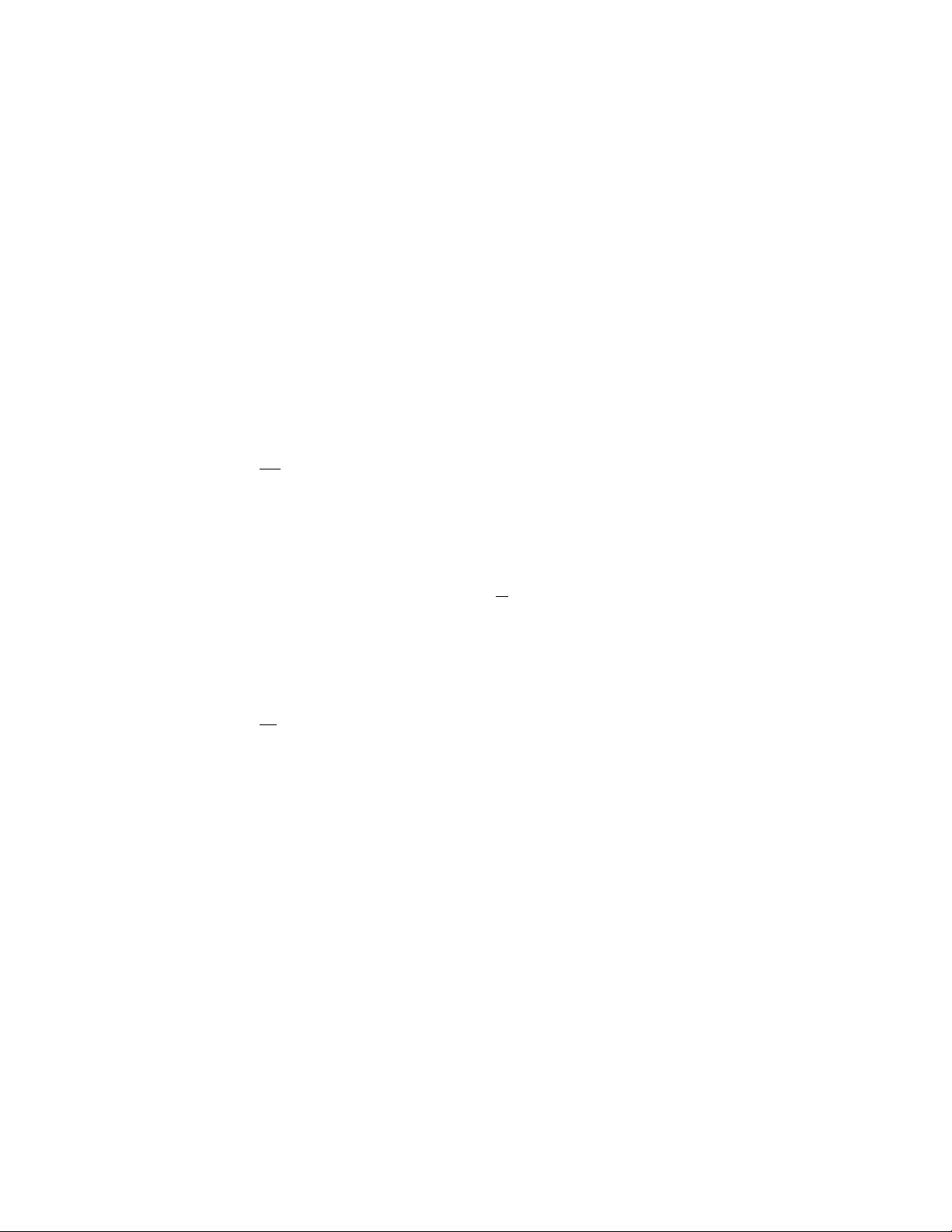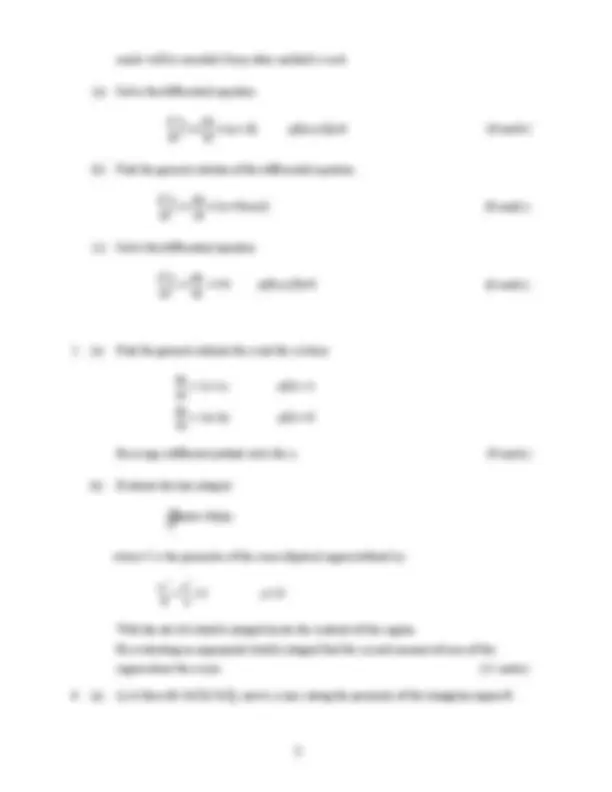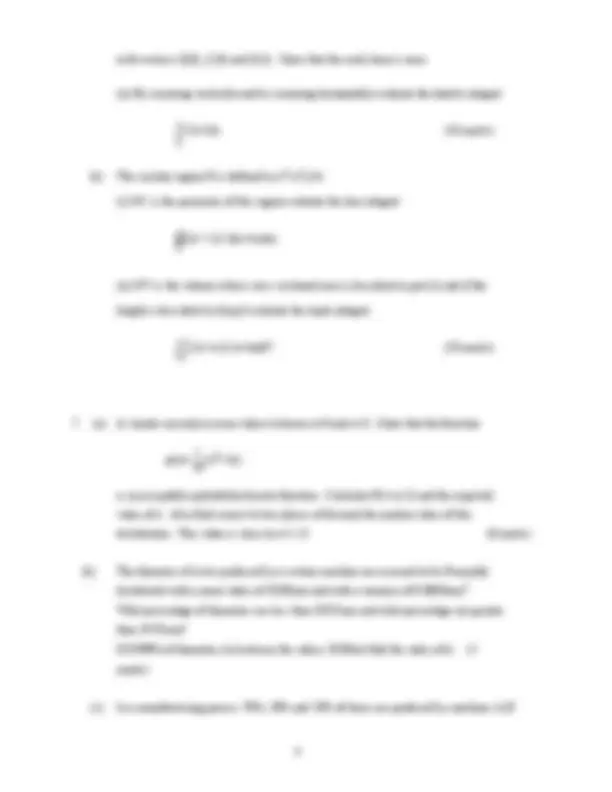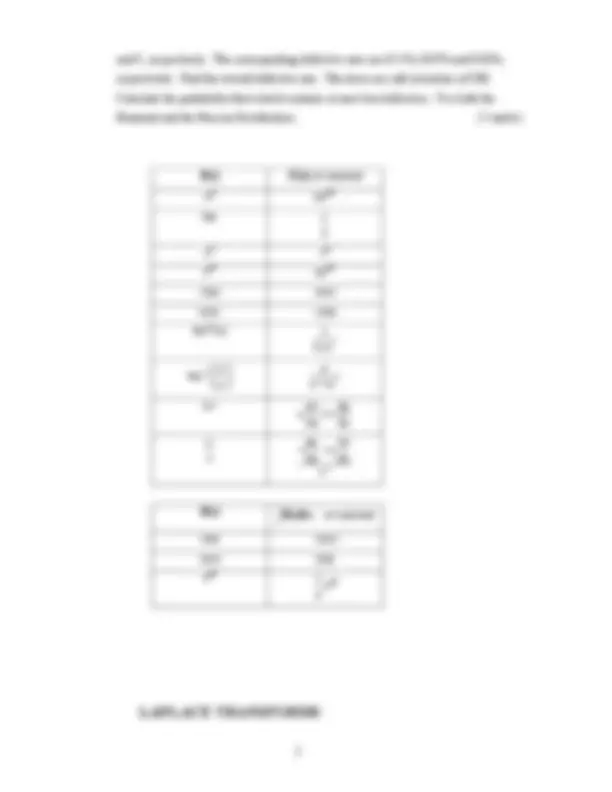





Study with the several resources on Docsity

Earn points by helping other students or get them with a premium plan


Prepare for your exams
Study with the several resources on Docsity

Earn points to download
Earn points by helping other students or get them with a premium plan
Community
Ask the community for help and clear up your study doubts
Discover the best universities in your country according to Docsity users
Free resources
Download our free guides on studying techniques, anxiety management strategies, and thesis advice from Docsity tutors
Main points of this past exam are: Inverse Laplace Transform, Separating, Variables, Differential Equation, Eulers Method, Improved, Approximation, Differential, Single Function, State Current
Typology: Exams
1 / 6

This page cannot be seen from the preview
Don't miss anything!




Answer FIVE questions.
All questions carry equal marks.
Examiners: Mr. P. Clarke Prof. M. Gilchrist
Mr. T. O’Leary
dy +2xy=6x y(0) 2 dx
By using Euler’s Method and by using the Improved Euler Method with a step h=0.
estimate the value of y at x=0.1. Find the error in either approximation.
h y =y + f(x ,y )+f(x ,y* ) 2
(8 marks)
(b) The current i in a LR circuit at ant instant t is found by solving the differential equation
di +4i=50sin3t i(0)= dt
By using a method of your own choice solve this differential equation.
Express the steady state current as a single function of the form Rsin( 3 t-α). Write down
the maximum and minimum values of this function. Find the smallest positive values
of t for which these extreme values hold. (8 marks)
(c) Find the dimensions of the open rectangular box of maximum volume that can be
constructed from 12m
2 of material. The box has a square base. You are required to
use a Lagrangian Multiplier. No marks will be awarded if any other method is used.
(4 marks)
2 -4y) about the values
x=2,y=1. The series is to contain terms deduced from second order partial derivatives.
(6 marks)
(b) Find the partial derivatives of u and v with respect to x and y where
-1 3y u=tan 2x
v=
2x
2x-3y
(i) If T=f(u) is an arbitrary function in u show that
x y 0 x y
(ii) Estimate the value of v if the values of x and y were estimated to be 5 and 3
with maximum errors of 0.005 and 0.003, respectively. (8 marks)
(c) Find the maximum/minimum values of the function V=8x
3 +4y
2 -12xy-6x+10. (6 marks)
(i) 3 2
s +7s +15s+
(ii) 3 2
s +4s +20s
(12 marks)
(b) By using Laplace Transforms solve the differential equation
2
2
d y dy 6 8y 16 y(0)=0 y (0)= dt dt
(c) Find the zero and the poles of the transfer function L[f(t)]
L[y] where
t
0
dy 4 16y 25 ydt f(t) y(0) y (0) 0 dt
(4 marks)
with vertices (0,0), (2,0) and (0,4). Show that the work done is zero.
(ii) By summing vertically and by summing horizontally evaluate the double integral
2
R
12x dA
. (10 marks)
(b) The circular region R is defined by x
2 +y
2 ≤16.
(i) If C is the perimeter of this region evaluate the line integral
2 2
C
(2x +2y )dx+4xydy
(ii) If V is the volume whose cross sectional area is described in part (i) and if the
height is described by 0≤z≤3 evaluate the triple integral
2 2
V
(2x z-2y z+4z)dV
. (10 marks)
p(x)= 18
(x
2 +2x).
is an acceptable probability density function. Calculate P(1<x<2) and the expected
value of x. Also find correct to two places of decimal the median value of this
distribution. This value is close to x=2.25. (8 marks)
(b) The diameter of rivets produced by a certain machine are assumed to be Normally
distributed with a mean value of 20.00mm and with a variance of 0.0003mm
2 .
What percentage of diameters are less than 20.02mm and what percentage are greater
than 19.95mm?
If 0.998% of diameters lie between the values 20.00±α find the value of α. (
marks)
(c) In a manufacturing process 70%, 20% and 10% of items are produced by machines A,B
and C, respectively. The corresponding defective rates are 0.12%, 0.07% and 0.02%,
respectively. Find the overall defective rate. The items are sold in batches of 200.
Calculate the probability that a batch contains at most two defectives. Use both the
Binomial and the Poisson Distributions. (7 marks)
f(x) f ′ (x)^ a=constant
x
n nx
n-
lnx
x
e
x e
x
e
ax ae
ax
sinx cosx
cosx -sinx
tan
2
1+x
1 x tan a
2 2
a
a +x
uv
dx
du v dx
dv u +
v
u
2 v
dx
dv u dx
du v −
f(x)
f(x)dx a=constant
sinx -cosx
cosx sinx
e
ax
a
e
ax